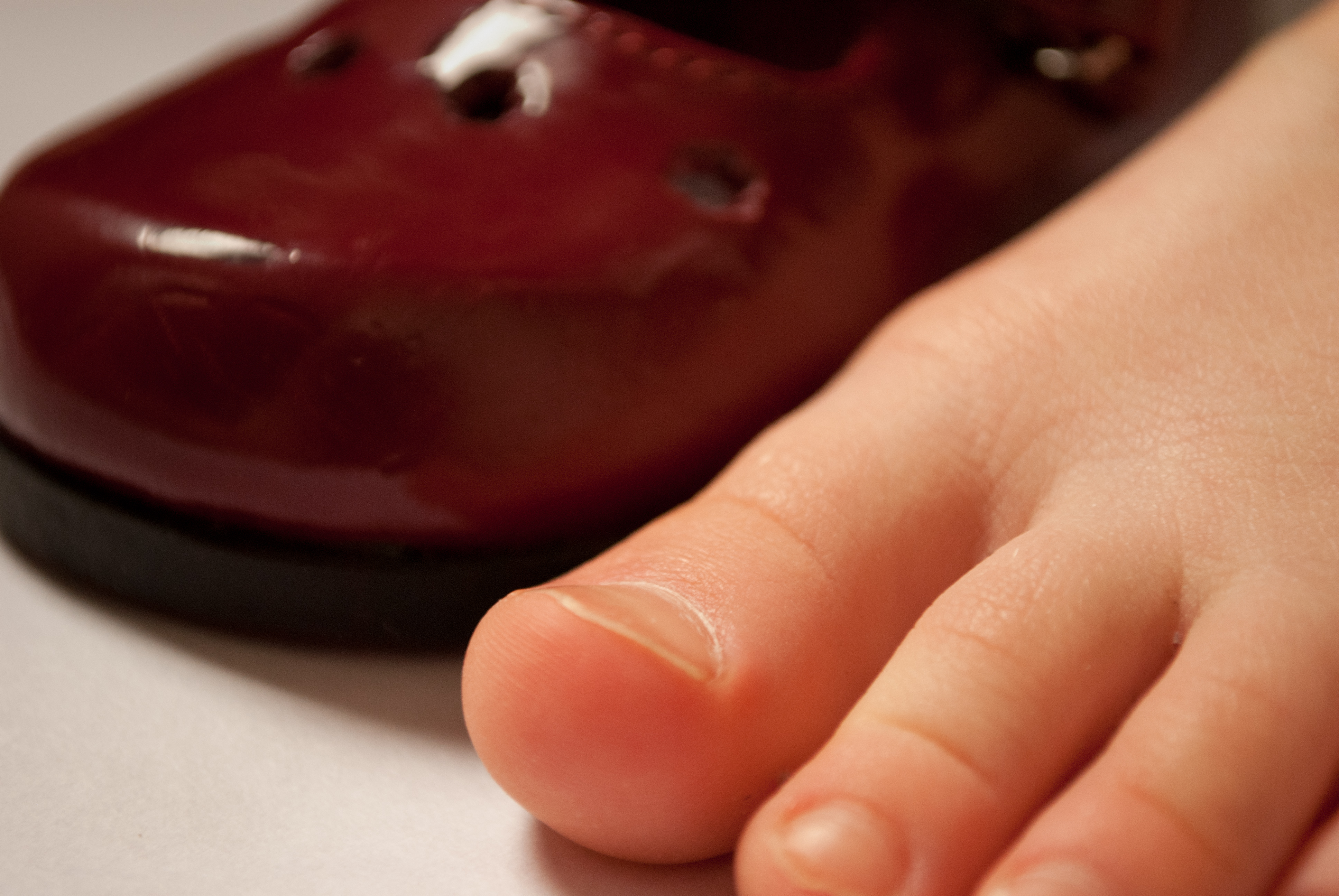When I was pregnant for the youngest and miserably waiting to go into labor and life was hard and my facebook friends were tired of hearing how I STILL had not gone into labor, one of the hardest days was the one in which I dropped a bowl on my big toe. At that point, I plead with God to induce me, fully believing that I would never feel the first pang of labor because my toe hurt so badly. (This never happened. Although it did for a cousin, which I found to be a phenomenal story.)
Months later, I noticed the gash of black and blue left by the bowl had crept all the way up my toenail. That dead spot, complete with unique curvature, didn’t stay put. Then, it was gone. My toe recovered. If you look at the nail now, you would have no idea I had ever cursed a bowl. This was both exciting (no gimpy toe) and also, sad. As if a part of my physical self that had been present for my final birth story was now gone, forever.
I’ve read/heard from multiple sources recently that your physical body is a different one from seven years ago. Our personal collection of flesh and bone contains a rhythmic dying and rebirthing cycle in individual cells, tissues and thus organs. It’s not like your entire spleen died off at once and got a newer, younger version – only that none of the cells that were functioning there seven years ago are still alive and working today. It’s the same, but completely different.
At the cellular level, we are different people than we were 7 years ago. In full truth, we’re different people than we were yesterday, as some of that life/death rhythm happened in the past 24 hours. But in totality, we’re different bodies. I can tell you, as a mother, it’s quite obvious that my body is different from 7 years ago when I started the birthing process. But it’s not about my midsection. I find this bit of information quite freeing, to know that my body matches my mind and my heart and all the rest of me in being different than it/I was 7 years ago.
If you start looking through the world with eyes for the 7 years, you see it everywhere. The Waldorf philosophy (of education) takes this 7-year cycle of change within the same human being pretty seriously. My MIL’s pastor says that we must recreate ourselves professionally about every 7 years. Marriage gurus speak of the “7 year itch” which makes sense – we’re sharing space and days with someone who is, quite literally, a different person than you married. But the same person. What do you do with these changes in the midst of the consistencies?
The 7 year switch becomes the queen of spades when returning to the town where I emerged into adulthood. We left 7 years ago, barely pregnant with the firstborn, with different jobs, beliefs, tastes in books and ways in which we spent our time, energy and money (all of which – we had no idea – we had so much, in comparison to the present). We were different people. And everyone who remained in the 419, to whom we now return and look forward to spending time with – they’re entirely new people, too. The same. But different.
The same, yet different. Now, I wonder what happens next, when we all give space to one another to be the same, yet different. It’s not just that I don’t eat the same foods or that a friend doesn’t live in the same house or have the same job. Those realities simply mark time in the continual process of becoming different, yet the same. Others might call that growing up, but that comes with a connotation that 7 years ago I wasn’t quite there. Not yet enough. Only a part of the whole – and that’s simply not true.
I was fully myself 7 years ago, when I lived in this town the first time. And I am fully myself today. The brown parts of my eyes look the same but the tiniest pieces that make them up are new and different. My heart does the same work of pumping blood to the rest of my body, but the tissues that come together to do this work weren’t around when I drove a silver Accord. The minivan scene is all they’ve known. Yet my Odyssey is something that no one in my new/old town ever knew of me.
Perhaps, then, the greatest work we can do is be present to our realities of today. The past 7 years have formed us, but it is not our make up. That will change in the next 7. We can take comfort in the fact it’s supposed to be that way. To try to remain something we once were becomes a futile effort, filled with expensive beauty treatments and riddled with disappointment. We cannot – nay, I say, should not – be what we were. We should be what we are, and give everyone around us the gift of that freedom.



